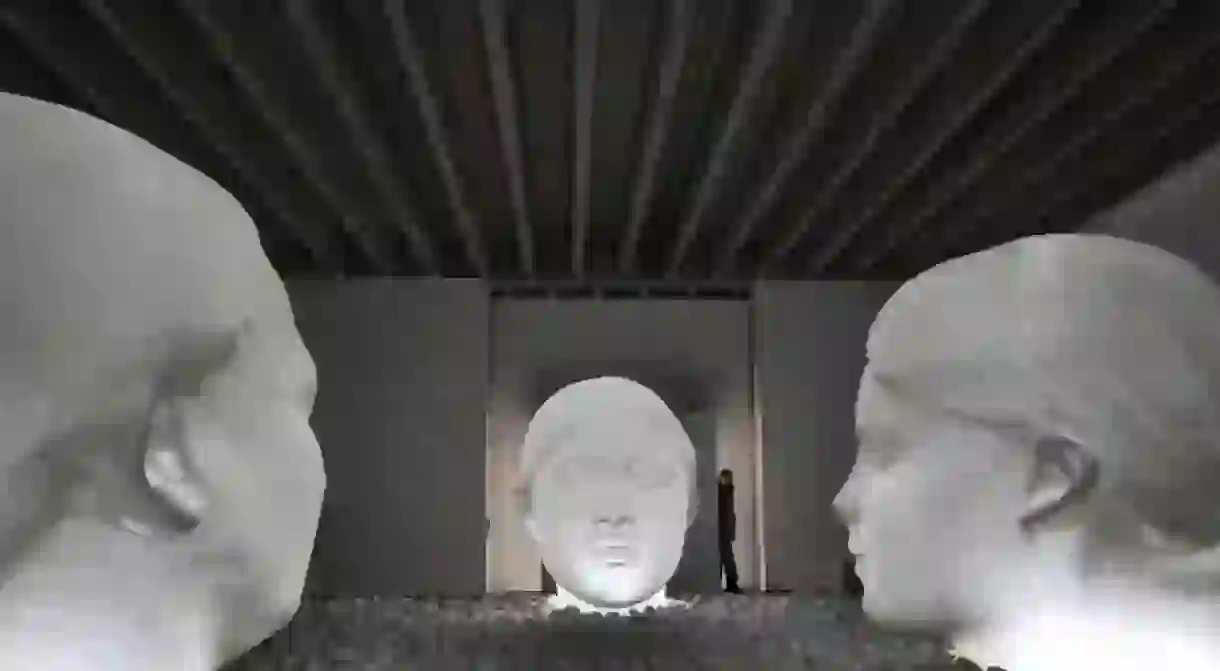The Spiritual Meaning Behind Jaume Plensa's Sculptures

With 30 projects spanning the globe, Jaume Plensa is probably one of the most renowned Catalan sculptors in the contemporary art scene. Though he is mainly known for his large-scale ethereal sculptures, Plensa has worked with a very diverse array of media, ranging from video projections to acoustic installations. We take a deeper look at Plensa’s life and body of work in order to discover the impulse that drives his artistic creation.
Jaume Plensa’s work juxtaposes the intellectual and the poetic. Though these two concepts are often mutually exclusive, the artist somehow manages to create extremely evocative sculptures with a strong conceptual basis. While many conceptual artists feel the urge to refuse beauty in order to convey an idea, the beauty and romanticism of Plensa’s sculptures manage to provide tangibility to his ideas. One of the many aspects in which the artist manages to do so is by introducing his works in the public space, thus allowing his sculptures to be animated by the city and its inhabitants.

Work in the public space
Plensa’s most influential work in this sense is probably his Crown Fountain, unveiled at Chicago’s Millennium park in 2004. This big unconventional sculpture, which is formed by two vertical towers with LED screens, marked a decisive turning point in Plensa’s career. On the screens, big-scale portraits of Chicago residents in motion alternated while those pictured intermittently spat water out of their mouths. This one-of-a kind fountain has become a true playground for locals and tourists, and Plensa himself confessed that he adores visiting his own sculpture in order to see how people playfully interact with his piece.

This interaction between the work, the viewers and the city is what gives life to the Catalan artist’s sculptures. Amidst the chaos of the city, Plensa’s works offer a sanctified haven in which people can laugh, play, reunite, or collect themselves. Though the Crown Fountain is probably one of his most playful works, focusing mainly on creating links between people amidst laughter and joy, it still conveys Plensa’s main recurring ideas. It represents the presence of duality, a constant in his body of work. In this monumental piece, the artist articulates the internal and the external, the public and the private space, and the collective and individual. It also shows how he grants a presence to his ideas – not a cold or hostile one, but rather a gentle and welcoming one.
These ideas are also present in his most recognizable works; for instance, in his pristine sculptures of human bodies and angelic teenage girl’s faces. His use of alabaster stone, sometimes combined with colored LED lights in order to accentuate its translucency, links the internal and psychological thoughts of the human being with its exterior façade.

Most of Plensa’s busts have their eyes closed, hinting at their withdrawal from the world and their connection to their inner self. Still, in spite of their retreat, the exterior space animates them by projecting something natural through their ethereal structures, and once again, the artist manages to connect two opposites.
Making literature tangible
As an avid reader, Plensa is also heavily inspired by literature and poetry and cites Blake, Shakespeare and Goethe as some of his main sources of inspiration. The artist pays tribute to his love of literature by introducing language and words into his work.

Plensa provides physicality to the intangible sounds of poetry and spoken language. Therefore, when working with letters, the artist is not trying to convey the meaning of words, but their material essence. What is a letter when it is isolated of its meaning?
By combining different letters from a diversity of alphabets, Plensa demonstrates the conventional nature of language and its true essence — that of a symbol. Still, there is nothing pessimistic in this conclusion. As in all of Plensa’s work, there are no negative assertions, but rather a message of hope, beauty and unity — the feeling of oneness despite the conventional barriers that separate humankind. By peeping through the cavities between the letters that make up the body of the sculpture, one is also able to see humankind as a whole.
Different materializations of a same message
The Catalan artist has worked with many more media techniques than the ones mentioned above. Besides using glass, steel, bronze, aluminum, water, light, sound and video in his sculptures, he has also produced many delicate black and white works on paper. Although the shape of his work may change, the artist himself asserts that all of his creations are a materialization of the same core idea, and it is probably safe to say that the idea that persists throughout Plensa’s work is humanity — specifically, a kind look upon humankind and its relationship with the internal and external world.














